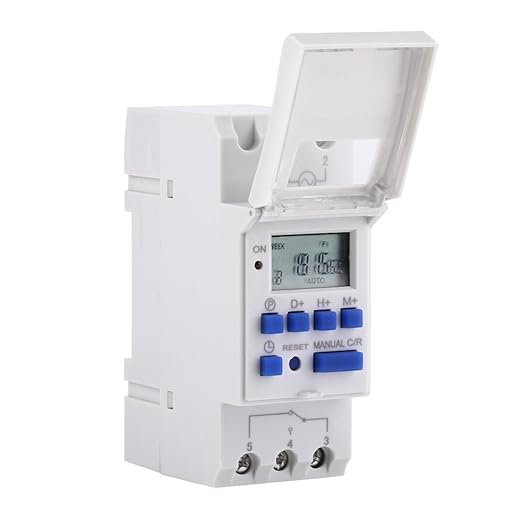









Understanding Power Schedulers: The Key to Efficient Energy Management
In a world where energy efficiency is more important than ever, power schedulers have emerged as essential tools for both residential and commercial settings. But what exactly is a power scheduler, and how can it transform the way you manage energy consumption? Let’s dive into the intricacies of power scheduling, its benefits, and how you can implement it in your life.
What is a Power Scheduler?
Imagine you’re the conductor of an orchestra, guiding each musician to play at just the right moment. A power scheduler performs a similar role, orchestrating when and how much energy is used in your home or business. Essentially, it’s a smart device or software that allows you to manage your energy consumption by scheduling when appliances and systems operate. This can lead to reduced energy costs and a more sustainable lifestyle.
The Benefits of Using a Power Scheduler
Why should you consider integrating a power scheduler into your energy management strategies? Here are a few compelling reasons:
1. **Cost Savings:** By scheduling energy-intensive appliances to run during off-peak hours, you can save significantly on your electricity bill. It’s like filling your gas tank when prices are low—timing is everything.
2. **Energy Efficiency:** Power schedulers can help reduce peak demand on the grid. When everyone uses energy at the same time, it creates strain on the system. By staggering usage, you contribute to a more stable energy supply.
3. **Environmental Impact:** Reducing energy consumption during peak times not only saves money but also lessens your carbon footprint. It’s a small change that can lead to big impacts.
4. **Convenience:** Many power schedulers come with smartphone apps, allowing you to manage your energy use from anywhere. Imagine controlling your home’s thermostat while you’re relaxing on the beach!
How Power Schedulers Work
At the heart of every power scheduler lies a simple yet powerful principle: automation. These devices can be programmed to turn appliances on and off at specific times, based on your routine. Here’s how they typically function:
– **Data Collection:** The scheduler gathers data about your energy usage patterns. Think of it as a detective piecing together clues to solve a case.
– **Scheduling:** Based on your preferences and utility rates, the scheduler creates a personalized energy management plan. It’s like having a personal trainer, but for your electricity!
– **Execution:** Once programmed, the scheduler automatically operates your appliances according to the plan. You can sit back and let the magic happen!
Choosing the Right Power Scheduler
When it comes to selecting a power scheduler, there are several factors to consider:
– **Compatibility:** Ensure the scheduler works with your existing appliances and smart home systems. It’s like finding the right puzzle piece to complete the picture.
– **User Interface:** A user-friendly interface can make programming your scheduler a breeze. Look for options that offer mobile apps for easy access.
– **Features:** Some power schedulers come equipped with advanced features like energy monitoring, usage alerts, and integration with renewable energy sources. Determine which features align best with your energy goals.
Implementing a Power Scheduler in Your Home
Ready to take the plunge? Here’s a simple step-by-step guide to implementing a power scheduler in your home:
1. **Assess Your Energy Needs:** Start by evaluating which appliances consume the most energy. This could include your heating and cooling systems, water heaters, and large kitchen appliances.
2. **Choose a Power Scheduler:** Research and select a power scheduler that fits your needs and budget.
3. **Set Up the Device:** Follow the manufacturer’s instructions to install and configure your scheduler. This may involve connecting to your Wi-Fi network and downloading an app.
4. **Create Your Schedule:** Decide when you want each appliance to operate. For instance, you might want your dishwasher to run overnight when electricity rates are lower.
5. **Monitor and Adjust:** After implementing your schedule, keep track of your energy consumption. Make adjustments as needed to optimize efficiency.
Conclusion
Power schedulers are a revolutionary tool in the quest for energy efficiency and cost savings. By understanding how they work and implementing them into your daily routine, you can take charge of your energy consumption and contribute to a more sustainable future. Think of it as a small step for you, but a giant leap for energy management!
FAQs
1. Can a power scheduler work with all types of appliances?
Not all power schedulers are compatible with every appliance. It’s important to check compatibility with your existing devices before making a purchase.
2. How much can I save on my energy bill by using a power scheduler?
Savings can vary widely based on your energy usage patterns and local utility rates. Some users report savings of 10-30% on their energy bills.
3. Are power schedulers easy to install and use?
Most power schedulers are designed for easy installation and come with user-friendly interfaces or mobile apps, making them accessible even for those who are not tech-savvy.
